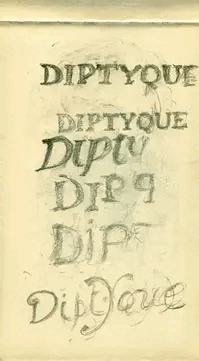The
Classic Jar
The velvety, slightly spicy scent of freshly shaved sandalwood makes for a rich and warm scent. And apparently, Ryan Reynolds and Blake Lively buy them in bulk.

Every tastemaker’s favorite, the fragrant French jars launched the luxury candle business
Think of an amazing hotel lobby, an incredibly stylish shop, an elegant event or the home of any cool person and you'll no doubt find one thing in common—the rich scent of a candle burning. It's a marker of taste, yes, but it's also a way to show guests that you've done something for them by preparing this olfactory experience. Of course, it wasn't always this way. And when it comes to the origin story of the luxury scented candle, only one brand comes to mind: Diptyque.
The French brand is so synonymous with candles that you might be surprised to learn that Diptyque didn't start out with hopes of creating a fragrance empire. Rather, it might have been one of the world's first concept stores. Located on Boulevard Saint-Germain in Paris, the original boutique was founded by interior designer Christiane Montadre-Gautrot, set designer Yves Coueslant and painter Desmond Knox-Leet—they sold exotic finds from their travels, luxury fabrics and linens, along with rare incenses and cologne by British house Penhaligon's. Clearly, they were interested in creating worlds, conjuring a mood and telling stories.
Diptyque founders Yves Coueslant, Christiane Gautrot and Desmond Knox-Leet in front of the first Diptyque shop.
This guiding spirit of artistic expression was reflected in the name chosen by the trio—it came from the fact that they wanted customers to get lost in their vision, mimicking the two panels of a diptych painting. Launching this kind of aspirational business seems almost commonplace now, but in the early 1960s, that bohemian disregard for convention was something of a risk. But one that clearly paid off. Because just a few years into the business, they decided to create their own candles.
Some of Desmond Knox-Leet's early sketches for the brand's signature jumbled lettering.
Each founder brought something to the table. Montadre-Gautrot, who designed Diptyque's early fabric designs, looked to a 'Prétorien' pattern—that Roman-inspired shield motif is still represented in the brand's famed oval logo. Knox-Leet was a British painter, but apparently, he also worked as a code breaker during WWII, decoding enemy messages. So it's no surprise that he was responsible for the deconstructed names that twist their way around Diptyque's signature black and white labels. Finally, Coueslant was the house's first nose, blending the original three fragrances for a trio of scented candles: Aubépine (an early floral ancestor of the rose), Cannelle (a woody, fresh cinnamon bark) and Thé (a strong, smoky black tea aroma).
As the brand celebrates the 60th anniversary of its legendary candles this summer, those three original scents are still available. Only now they're joined by a wide-ranging collection of nearly 50 individual scents that work like an aromatic teleporter that is able to whisk you away to far-flung locales or take you back to a favorite memory. The brand refers to this “olfactory treasure” as an “exceptional herbarium of scents.” There are no silly naming conventions—the scents are straightforward and pure, like the simple names suggest. Cyprès, for example, smells like a grove of cypress trees, like the wind blowing through the resinous, almost honeyed evergreen needles. The house's team of perfumers say their goal is to “pay homage to nature simply by enhancing the raw ingredients.”
Remarkably, not much has changed in the last six decades when it comes to producing the candles. It takes two days to make each candle and includes eight separate processes—most of which are still done by hand. Is that what makes them cost so much, I wonder? Later I come to find that this is why they're worth so much. Because, yes ... these perfectly-Instagrammable candles have clearly become a status symbol. Just placing one on your coffee table is a flex. It's the reason why we clean out the wax remnants after burning them and reuse the glass jars to hold Q-tips in medicine cabinets or pencils on our desks.
But the artisan craftsmanship is clear once you light it up. Artisan candle makers, all with years of experience, mix up the best blend of waxes and perfume oils for each scent, then straighten and center each wick perfectly before cutting it to exactly 4 millimeters. Because each fragrance concentrate reacts to heat in a different way, meticulous care is taken to strike the right balance. To achieve a perfect diffusion of perfume, each candle benefits from a unique blend of high-quality waxes in small batches. And this is how a Diptyque candle actually is able to fill a room with fragrance without being overpowering. Anyone who has come to a jar for the looks has inevitably stayed for the quality.
The velvety, slightly spicy scent of freshly shaved sandalwood makes for a rich and warm scent. And apparently, Ryan Reynolds and Blake Lively buy them in bulk.
One of our long-time favorites, this deep, smoky wood scent is also the candle John Mayer burns all the time. He calls it “foh the boys,” but the name is merely French for “fire wood.”
One of the brand's most popular scents, Adele and LeBron James are both devotees of the sweet smell of fresh blackcurrant berries.
Baies large candle, $110
Fig can be a tricky scent to truly capture, but this takes the whole tree into account—from the bark and fresh green leaves to the milky sweetness of the fruit. David and Victoria Beckham have these in all their homes.
Advertisement

